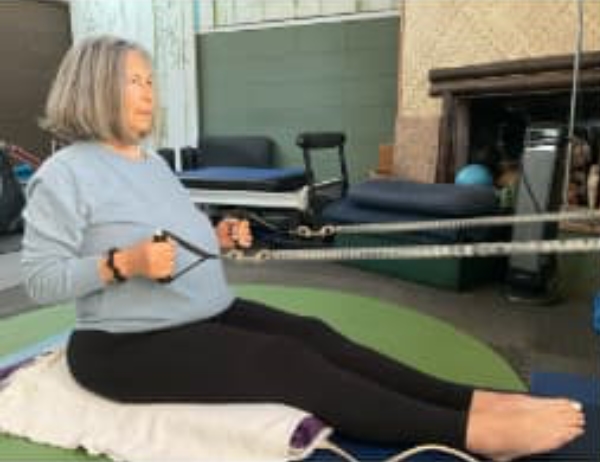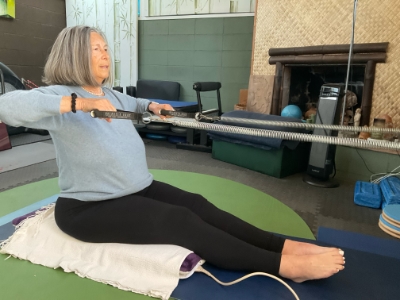Pilates

In its nuanced way Pilates can be both an aerobic and non-aerobic form of exercise. It requires concentration and focus while you move your body’s muscles and joints through its precise ranges of motion. Pilates lengthens, stretches and strengthens all the major muscle groups in a balanced fashionstriving toward symmetry. It requires concentration in finding your “center” (your rooted core) which assists in the stability of your joints and mobility of your muscles to perform each movement correctly with control utilizing rhythm and a specific breathing pattern.
Pilates increases your energy levels, helps focus your mind beyond exercise, in addition to overall strengthening of your entire body. Comprised of both mat and apparatus exercises, Pilates movements are designed so the body feels challenged yet not exhausted. This leaves you with a feeling of inner strength, heightened body awareness and empowerment after having been through a challenging workout.
Attention is placed on posture, breath, and movement control, with emphasis on elongation of the muscles. This gives the body a long lean muscle tone and sculpted appearance. After a few sessions, you will stand taller and hold yourself differently.

Pilates Springboard Exercises

Low Row for strengthening the back muscles (Lats) that help support the integrity of the spine and its alignment stability.

High Row (Traps & Rhomboids) which help support the integrity of the shoulder joint, shoulder girdle, upper spine & neck structures.
Med Note: Because of Pilates’ core focus, it is beneficial not only in the field of fitness, but also in pre and post physical rehabilitation. It can be used to progress individuals through movements which represent their day-to-day activities (functional movement), while additionally recovering from an injury. The focus on strengthening the core while improving postural awareness is especially well indicated for the alleviation and prevention of back, neck and joint pain.